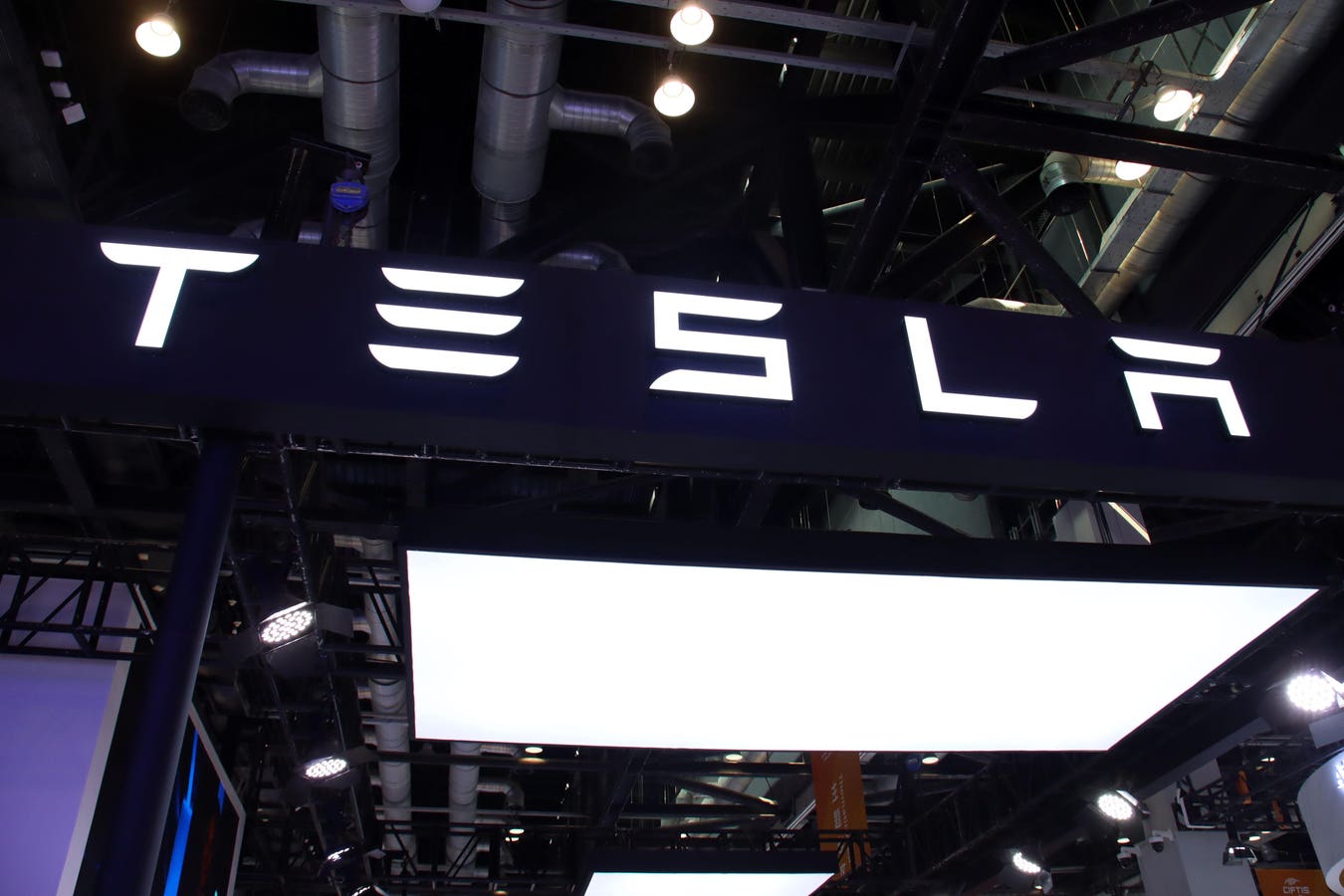BEIJING, CHINA – SEPTEMBER 16, 2024 – Visitors visit the booth of Tesla at the 2024 China Beijing … [+]
China has emerged as the biggest growth market for electric vehicles (EVs), with nearly a third of all vehicles sold in the country being electric, compared to less than 10% in the U.S. However, EV bellwether Tesla faces considerable challenges from Chinese EV makers who are rapidly gaining ground. Although China remains Tesla’s largest market outside the U.S., Tesla’s recent performance in the country has been underwhelming. From January to August, Tesla delivered about 388,000 vehicles in China, largely flat compared to the previous year. This contrasts sharply with the broader Chinese EV market, which is expected to grow by close to 30% this year, suggesting that Tesla is losing market share. Tesla’s share of the Chinese New Energy Vehicles market—which includes plug-in hybrids, fuel cell vehicles, and battery electric vehicles—fell from 9% to 6.5% in the first seven months of this year, according to Shanghai-based consultancy Automobility. More broadly, the rise of Chinese EV makers threatens Tesla’s position not only in China but globally.
With a mixed performance in China and the overall slowdown in the global EV market, the performance of TSLA stock with respect to the index over the last 3-year period has been quite volatile. Returns for the stock were 50% in 2021, -65% in 2022, and 102% in 2023. In contrast, the Trefis High Quality Portfolio, with a collection of 30 stocks, is considerably less volatile. And it has outperformed the S&P 500 each year over the same period. Why is that? As a group, HQ Portfolio stocks provided better returns with less risk versus the benchmark index; less of a roller-coaster ride as evident in HQ Portfolio performance metrics.
There are over 100 EV brands in China that cover a broad range of the EV spectrum. Several premium models from the likes of Nio and Li Auto – which offer high-tech interiors and range extender generators – go head to head with Tesla’s offerings such as the Model Y and 3. Moreover, Chinese automakers have also been able to churn out compelling vehicles priced at as low as $10,000 to 15,000. In essence, they’ve done what Musk and Tesla have only dreamed about but have been unable to deliver. China has the advantage of having a massive EV ecosystem- that spans from motors and drivetrains to battery manufacturing and increasingly compelling software engineering and semiconductor competence. Given the rising competitive pressures in the EV market, should you Drop Tesla and pick these AI and auto component stocks
As Chinese competitors strengthen, another question arises: Could they not only surpass Tesla in EV sales but also dominate the future of autonomous driving? Tesla has thus far been viewed as a leader in developing self-driving technology. The company’s vehicles have logged a total of 1.6 billion miles with its full-self driving software engaged, giving its machine-learning algorithms considerable strength. However, this may not be enough given that Tesla is losing out in the Chinese autonomous driving market. Tesla is facing delays in rolling out its Full Self-Driving software in China as local regulators have not authorized the technology yet, citing worries about accidents involving Tesla’s software in the U.S. and also due to potential data security issues. Separately, Tesla hasn’t been permitted to transfer driving data from China to the U.S. to train its self-driving models. Chinese carmakers, on the other hand, have government approval and offer more advanced driver-assistance features compared to what Tesla is presently allowed to equip its vehicles within the Chinese market. This could put the company at a handicap.
On the other hand, with their low prices, innovative designs, and luxury features, the Chinese could put more cars on the road and potentially improve their competence in the autonomous vehicle space where data is king. More cars on the road means more self-driving miles, more data, and more learning – could that help Chinese EV makers open an insurmountable lead in driverless cars that would mean they’d gain even more share over the auto industry much as the Japanese – Toyota, and Honda – did 40 years ago. In addition, more scale will mean even more economies of scale and that is just how the automotive industry has been. Did you know that Tesla has a fast-growing Clean Energy business. Could It help derisk the company’s auto business?
Despite the growing dominance of Chinese EV makers, Tesla has a couple of advantages that could help it navigate these challenges. Tesla continues to benefit from its manufacturing footprint in China. Tesla’s Shanghai is the largest, boasting the capacity to produce over 950,000 Model 3 and Model Y cars annually. By comparison, Tesla’s California facilities can produce around 650,000 vehicles. Tesla delivered over 426,000 China-made cars (including both China sales and exports) in the first half of this year alone, accounting for more than half of its global deliveries. Moreover, Tesla remains well-positioned globally and it benefits from several protective factors in global trade. Chinese automakers haven’t been able to penetrate the U.S. on account of steep tariffs (as much as 100% imposed by the Biden Administration) besides other regulatory hurdles. In the E.U., although Chinese imports make up about a fifth of the EV market currently, regulators are contemplating tariffs of close to 50%. This could potentially slow Chinese automakers’ global expansion plans, giving Tesla time to defend its market share in key regions. Do you want upside from the EV market, without taking exposure to individual EV brands? Check out our theme of EV supplier stocks
We value Tesla stock at about $230 per share, which is roughly in line with the current market price. See our analysis on Tesla Valuation: Is TSLA Stock Expensive Or Cheap? for more details on Tesla’s valuation and how it compares with peers. For more information on Tesla’s business model and revenue trends, check out our dashboard on Tesla Revenue: How Does TSLA Make Money?
Tesla’s demand outlook will hinge on the trajectory of the U.S. economy. While investors have their fingers crossed for a soft landing by the U.S. economy, how bad can things get if there is another recession? Our dashboard How Low Can Stocks Go During Market Crash captures how key stocks fared during and after the last five market crashes.
TSLA Return Compared With Trefis Reinforced Portfolio
Invest with Trefis Market Beating Portfolios
See all Trefis Price Estimates


